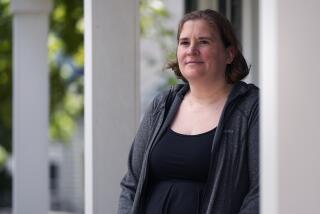The messy complications of breakfast in the classroom
- Share via
The Los Angeles Unified School District is in a period of tremendous upheaval that, it’s hoped, will result in better education for its students. With so much changing and so much at stake, of course there are more than a few daggers drawn. But when the teachers union and district administration can’t even get together over feeding hungry kids, something sick is going on, and I don’t mean that adjective the way high school students use it.
The district is using federal funds — and small outside contributions from a private organization — for its breakfast-in-the-classroom program. Instead of being offered a free meal before school starts, or a “second-chance” breakfast at the first break, students at some 300 schools now eat the meal in the classroom during instructional hours. The district plans to expand the program to all schools.
But United Teachers Los Angeles, after conducting a survey of more than 700 participating teachers, announced that the majority weren’t thrilled with the program. It’s messy and takes far more than the 10 or 15 minutes that proponents say. The teachers spend too much time on helping kids with their food and on cleanup afterward, according to union officials, and lose something like half an hour of instructional time every day. There also have been increases in vermin, the union says.
The teachers would like the program if it were before school time and in the cafeteria, where they don’t have to deal with it. The district says too few students participated before school, either because their parents couldn’t get them there on time or because of the stigma attached to getting a free meal. Eighty percent of L.A. Unified students qualify for subsidized lunches — which means the families are very poor indeed — and only about 30% of them came to the early breakfast. For the classroom breakfast program, though, all children receive the meal regardless of family finances so that no one feels singled out.
There are all sorts of debates about whether the ones who didn’t come to the early progrm were really all that hungry. New York Mayor Michael R. Bloomberg has refused to start the program in his schools for fear that too many students would eat two breakfasts — one at home, one at school — contributing to obesity. Supporters of the L.A. Unified program say they’re working on educating parents not to feed their children before school. And I have to admit, that sounds pretty strange — teaching parents not to feed their children when that’s already happening, so that they will eat a taxpayer-funded breakfast at school instead.
There are legitimate questions about whether truly hungry children wouldn’t eat a breakfast if it meant that they had to arrive at school 15 minutes earlier, or why the district couldn’t time buses to bring all students earlier; they could play or eat as they chose. Those are questions The Times’ editorial board will be asking of the district.
But there are questions for the teachers as well. Yes, you might lose some instructional minutes at the beginning of the day, but aren’t students who have just had a bite to eat also more energetic, raring to go on their studies? Maybe it’s not all about how many minutes of instruction but the quality of those minutes, which is surely improved by alert, happy kids.
Maybe the most troubling thing here is that it appears the district never asked the teachers; their viewpoint on the program didn’t seem to be taken into account until the union survey was released. Before decisions are made about stopping, continuing or expanding the program, there’s more the schools and teachers should know. A fairly sizable minority of teachers in the UTLA survey didn’t have problems with the program; maybe they’re doing something different that could help other teachers.
As a society, it’s hard to imagine that we would tolerate hunger in our children. Surely there’s a way to provide nutritious food in a classroom without making a full, messy production of it. Perhaps teachers could be supplied with small refrigerators that were stocked with string cheese and dried fruit. Sure, kids can turn anything into a bit of a mess, but those are fairly tidy, quiet foods. They don’t require place mats or serving trays; students could take them from a basket at the front of the room or not, as they please. I’m not sure they need mini-omelets or breakfast burritos or containers of yogurt to be adequately fed. Or would the federal government refuse to pay for a less-elaborate program?
Easy, packaged foods would not keep hundreds of cafeteria employees in their jobs as the full-on breakfast-in-the-classroom program does — which is why the Service Employees International Union, which represents cafeteria workers and is a far more powerful political force in L.A. Unified than the teachers union, supports the breakfasts.
Jobs are good, but the important thing is supposed to be what’s best for kids — getting something to eat if they need it, without losing significant amounts of instructional time. So what’s keeping all these smart people from figuring out a reasonable solution?
ALSO:
How not to say the wrong thing
A curriculum crunch for California
Smoking and the right to dumb choices
More to Read
A cure for the common opinion
Get thought-provoking perspectives with our weekly newsletter.
You may occasionally receive promotional content from the Los Angeles Times.







